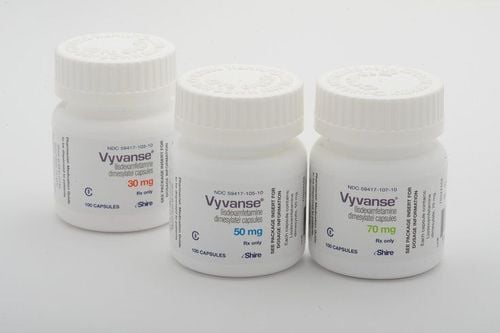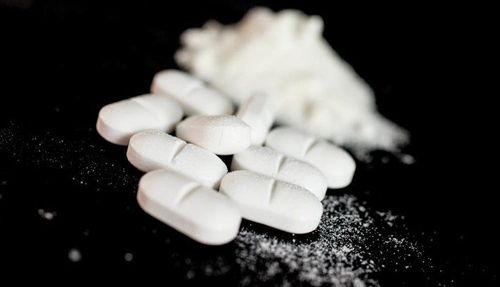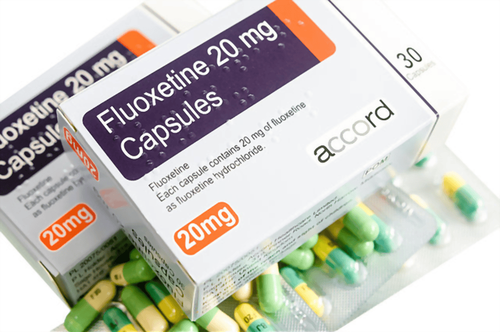This is an automatically translated article.
Children with obsessive-compulsive disorder (OCD) are plagued by unwanted thoughts, fears, and stress. Therefore, they try to reduce it by compulsions such as counting or washing hands. This article explains how obsessive-compulsive disorder affects children, how it's diagnosed, and the most effective treatments.1. Overview of Obsessive Compulsive Disorder in Children
According to the CDC, obsessive-compulsive disorder is a disorder of the brain that adversely affects behavior and causes intense anxiety in people with it. People with obsessive-compulsive disorder experience obsessions that make them uncomfortable and may feel like they have to do with those thoughts, even when their actions don't really make sense.For children with obsessive-compulsive disorder, the thoughts and urges to do certain actions persist, even when they try to ignore it or get the child to walk away. Children can develop obsessive-compulsive disorder (OCD) when unwanted thoughts and behaviors that children feel they have to do because of those thoughts occur frequently, take up a lot of time (more than an hour or so). per day), interferes with activity or makes the child very uncomfortable. These thoughts are called obsessions. The behavior is called coercion.
Parents and caregivers of children with obsessive-compulsive disorder must understand this in order to be able to help their child with effective treatment. Although the signs and symptoms of obsessive-compulsive disorder in children and adults are similar, important differences exist. In addition, the signs of obsessive-compulsive disorder in children can resemble those of attention deficit hyperactivity disorder, autism, and Tourette's syndrome. A complete medical and psychological evaluation can help your doctor make an accurate diagnosis.
2. Causes of Obsessive Compulsive Disorder
Experts don't know the exact cause of obsessive-compulsive disorder in children, so they can only point to a combination of biological and environmental factors.Biological factors:
Brain structure: Imaging studies show a link between obsessive-compulsive disorder and abnormalities in the prefrontal cortex, a subcortical structure of the brain. Genetics: While there is no specific "obsessive-compulsive disorder gene," there is evidence that specific versions or alleles of certain genes may signal greater vulnerability. Furthermore, obsessive-compulsive disorder has been found to run in families. Research shows a link between inadequate levels of the neurotransmitter, serotonin, in the development of obsessive-compulsive disorder in children. Some evidence exists to suggest that parents may pass on the ineffectiveness of serotonin to their children. Because of this, scientists also suspect a genetic component in the development of obsessive-compulsive disorder. Environmental factors:
Being physically or mentally abused. Dramatically change the living environment. Pathology such as streptococcal infection. The death of a loved one. Parents divorced. School-related problems or changes such as school transfers, school violence. Other traumatic events or experiences. Because there is no laboratory test for obsessive-compulsive disorder in children, physicians base their diagnosis on a comprehensive psychiatric evaluation, after ruling out other physical causes. obsessive-compulsive disorder symptoms.

Chưa có nguyên nhân chính xác cho chứng rối loạn ám ảnh cưỡng chế ở trẻ em
3. Symptoms of Obsessive Compulsive Disorder in Children
Symptoms in children with obsessive-compulsive disorder involve repetitive thoughts or images called obsessions. Compulsions represent behaviors that are repeated over and over to dispel thoughts.Examples of obsessive thoughts in children with obsessive-compulsive disorder may include:
Preoccupation with germs, dirt, illness. Annoying and unwanted thoughts and images about things that are violent or disturbing, like harming others. Expresses repeated doubts, such as whether the stove is off, the door is locked. Deep thoughts about hurt parents. Too preoccupied with symmetry, order, and precision. Worrying excessively about getting sick or making others sick. Disturbed thoughts are not suitable for personal religious training. Too eager to know or remember events that seem so trivial. Unreasonable attention to details. Worrying too much about something bad happening like a car accident or a thief breaking into the house. Aggressive and impulsive thinking (may be more common in adolescents). Examples of compulsive behavior in children with obsessive-compulsive disorder may include:
Washing hands excessively, often, up to 100 times a day. Check and double check to make sure the hob is turned off or locked. Try to follow established rules of order, like arranging personal items in a room in a particular way, and become very upset if someone breaks the arrangement. Complicated sequences or rituals must be performed exactly the same each time. Counting and recounting too much. Preoccupation with ordering or grouping objects. Constantly seek reassurance from friends and family. Asking the same question over and over again. Repeating words spoken by yourself or others. Repeat sounds, words, numbers or music. Obsessive-compulsive disorders in children differ from adults in that:
Children with obsessive-compulsive disorder often have specific obsessions related to the death of their parents. Children's phobias rarely emphasize sexual themes, although it's important to note that adolescents may actually experience higher rates of sex-focused obsessions. Children's rituals or compulsions may be more likely to involve or focus on family members. Children with obsessive-compulsive disorder may hoard more often than adults with the disorder. Childhood-onset obsessive-compulsive disorder also seems to signal an increased risk of tic disorders and attention deficit hyperactivity disorder (ADHD). Children engage in these behaviors because they feel that the behaviors will prevent bad things from happening or make them feel better. However, this behavior is not usually associated with a real risk of something bad happening or that the behavior is extreme, such as washing hands several times per hour. A common myth is that obsessive-compulsive disorder means being really neat and orderly. Sometimes obsessive-compulsive disorder behaviors can be related to cleaning, but many times people with obsessive-compulsive disorder are too focused on the same thing over and over again, instead of being organized. . Obsessions and compulsions can also change over time.
4. Treatment of Obsessive Compulsive Disorder
The first step in treating someone with obsessive-compulsive disorder is for a doctor to do a physical exam and run some evaluation tests. A comprehensive assessment by a Psychiatrist will determine if the anxiety or distress is related to the memory of a traumatic event that actually occurred or whether the fear is based on thoughts and other beliefs or not. Psychiatrists should also determine whether the person with obsessive-compulsive disorder has a current or past tics. Anxiety or depression and disruptive behaviors can also occur with obsessive-compulsive disorder.
Cần thực hiện test đánh giá trước khi chẩn đoán và điều trị rối loạn ám ảnh cưỡng chế ở trẻ em
In most cases, the currently recommended treatment for childhood-onset obsessive-compulsive disorder is a combination of individual or group cognitive-behavioral therapy (CBT) and other drugs that increase neurochemical serotonin levels such as selective serotonin reuptake inhibitors (SSRIs)
4.1. Cognitive behavioral therapy One of the most common and most effective forms of behavioral therapy for obsessive-compulsive disorder is modified exposure and response prevention therapy in children (ERP). . ERP involves exposing children to the anxiety caused by their obsessions and then preventing the use of rituals to relieve their anxiety. This cycle of exposure prevention and response is repeated until the child is free of the obsessions and compulsions.
For children with obsessive-compulsive disorder, they often ask others to participate in their compulsive behavior, and family members are often forced to comply with those requests. For treatment to work, the compulsion needs to stop and family members must be aware of this.
Parents should also be a resource to help professionals in the development of therapies for obsessive-compulsive disorder in children. Every day, parents can help remind young children that OCD is the “bad guy.” Such a technique can help reduce the chance that the child feels blamed or embarrassed for having an obsessive-compulsive disorder.
4.2. Medication Use If your child has a severe obsessive-compulsive disorder, treatment will include both CBT and medication. SSRIs are commonly used to help reduce a child's anxiety, however, these drugs must be used with caution in children and adolescents, as they may increase the risk of suicide in this age group.
The three SSRIs approved by the FDA for use in children and adolescents with obsessive-compulsive disorder are:
Luvox (fluvoxamine): For use in children 8 years of age and older. Prozac (fluoxetin e): Use for children 8 years and older. Zoloft (sertraline): Use for children 6 years and older. If OCD is caused by PÁDAS, treatment may include:
Antibiotics (penicillin, azithromycin). Intravenous immunoglobulins. NSAIDs and corticosteroids. Plasma exchange. Tonsillectomy .
5. Prevention of Obsessive Compulsive Disorder
It is not known exactly why some children develop obsessive-compulsive disorder. Likely a biological and neurological component, some children with obsessive-compulsive disorder also have Tourette syndrome or other tics. There is some research to suggest that health problems during pregnancy and childbirth can make obsessive-compulsive disorder more likely, which is one of the many reasons it's important to support women's health when they're pregnant. pregnant.Raising a child with obsessive-compulsive disorder can be challenging, but there is a way to cope. Understanding obsessive-compulsive disorder information is an essential first step that every parent of a child with an obsessive-compulsive disorder should take to become an effective facilitator in the treatment process. At the same time, understanding your baby's illness will also help you reduce stress and make it easier to take care of your baby.
Finally, it's important to never give up hope. While there is no "cure" for obsessive-compulsive disorder, there are many different treatments, so if the first strategy doesn't work, keep trying. Sometimes it is simply a matter of finding the right therapist or the right combination of medication and psychotherapy. With the right treatment, many children can get relief from their symptoms and learn coping strategies to thrive in everyday life.

Chưa có biện pháp phòng ngừa rối loạn ám ảnh cưỡng chế ở trẻ em
Gathering a team of leading pediatricians: including leading experts with high professional qualifications ( professor, associate professor, doctorate, master), experienced, worked at major hospitals such as Bach Mai, 108.. The doctors are well-trained, professional, have a heart - a vision. Understanding young psychology. In addition to domestic pediatric specialists, the Department of Pediatrics also has the participation of foreign experts (Japan, Singapore, Australia, USA) who are always pioneers in applying the latest and most effective treatment regimens. . Comprehensive services: In the field of Pediatrics, Vinmec provides a series of continuous medical examination and treatment services from Newborn to Pediatric and Vaccine,... according to international standards to help parents take care of their baby's health from birth to childhood. Advanced techniques: Vinmec has successfully deployed many specialized techniques to make the treatment of difficult diseases in pediatrics more effective: neurosurgery - skull, stem cell transplant blood in cancer treatment. Professional care: In addition to understanding children's psychology, Vinmec also pays special attention to the children's play space, helping them to play comfortably and get used to the hospital's environment, cooperate in treatment, improve the efficiency of medical treatment.
Please dial HOTLINE for more information or register for an appointment HERE. Download MyVinmec app to make appointments faster and to manage your bookings easily.
References: verywellmind.com, cdc.gov, healthyplace.com












